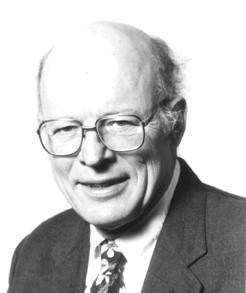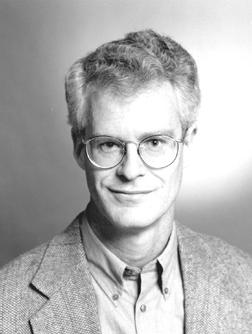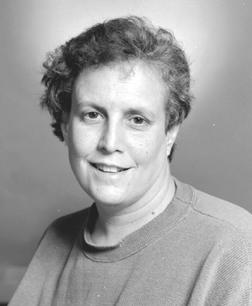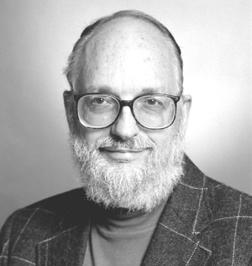The University Record, November 5, 1997
|
|
|
|
|
|
Bailey |
Bornstein |
Powers |
Ross |
|
|
|
|
|
|
Schoenfeldt |
Scodel |
Walton |
Woods |
By Jane R. Elgass
Ten faculty members have received 1997Ð98 Michigan Humanities or Michigan Arts Awards.
The awards are presented annually to tenured, full-time faculty engaged in major scholarly and creative projects in relevant fields. The faculty members’ units receive funds to support the appointment of visiting teacher-scholars, freeing the award recipients from teaching responsibilities for one term.
In announcing the award recipients, Frederick Neidhardt, interim vice president for research, noted that “1997Ð98 marks the third year in which the Office of the Vice President for Research, together with the LS&A dean and the vice provost for the arts, has supported innovative scholarly and creative work by University of Michigan faculty through the Michigan Humanities Awards and the Michigan Arts Awards. We are pleased to be able to provide faculty members with the time needed to carry forward these imaginative projects.”
The Michigan Humanities award recipients and their projects are:
Richard W. Bailey, professor of English, “Twentieth-Century English.”
In two prior books, Images of English and Nineteenth-Century English, Bailey showed that “it is possible to locate the history of the language within the history of the culture that produced it.”
“With its preoccupation in the remote past, the history of English has been surprisingly neglectful of the recent past,” he said. “As we approach the end of the 20th century, it is a good time to record what has happened to English in the past hundred years. Twentieth-Century English will extend my own historical work and stimulate further interdisciplinary study in history, linguistics and English.”
George Bornstein, the C. A. Patrides Professor and professor of English, “Making Modernisms: Textual Materiality and Cultural Construction.”
The purpose of the book, he stated in his proposal, is to revise recent views of literary modernism “as favoring the anti-historical over the historical, product over process, or totalizing rather than interrogative. . . . In contrast, I argue that viewing modernism in its original sites of production and in the continually shifting physicality of its texts and their transmission results in an alternative view very different from current construction.”
Jonathan Freedman, associate professor of English, “Angels, Monsters, and Jews.”
His book, Freedman noted in his proposal, “anatomizes the fraught, shifting and complex relation between two of the most charged and multiply invested figurations of identity of the last hundred years: ‘the Jew’ and the sexually transgressive, the deviant, the ‘queer.’ These predications emerged at roughly the same places, at the same historical moment, and in significant interrelation with one another.
“Under the pressures of assimilation, emancipation and modernity, ‘Jews’ could no longer be understood as members of a religious or national community . . . and new figures like ‘the homosexual,’ ‘the pervert,’ ‘the degenerate’ were under constructionÑoften in direct, frequently in mediated, relation to the figure of the Jew.”
Martin J. Powers, associate professor of history of art, “Picturing Humanity in Song Dynasty (960Ð1278) Painting.”
Citing specific Song paintings, Powers notes in his proposal that family, affliction and compassion are themes that sound natural to the modern ear. “Yet historians know that such subjects are by no means universal. When the pedestrian nobility of rural life becomes a fit subject of art, we must seek a discursive realm within which these subjects might acquire significance and force.”
Some Song dynasty paintings were done on commission or for the court, but many were sold in the market place, restaurants and tea houses. Buyers were officials, scholars, wealthy merchants or nobility. “The first two groups provided both the source and the audience for a body of poetry devoted, among other things, to rural life, family life, childhood and poverty,” Powers said, creating “a tradition of socially conscious poetry exploring human experience across a wide arc of the social spectrum.”
Powers will write five essays exploring new constructions of family, childhood and poverty in Song painting, each one investigating one or two paintings as a focus for these themes: the rural poor, the “people/min,” family and domicile, childhood, and the ox and herd.
Marlon B. Ross, associate professor of English, “Modeling Manhood: Black Masculinities and the Cultures of Racial Uplift.”
Ross’s project is a two-volume study of how African American men have been represented and especially have represented themselves in various cultural media, political movements and social institutions. The first book is titled The Color of Manhood: Racial Imaging and Sexual Politics in the Civil Rights Era. The companion book is Modeling Manhood.
Ross noted in his proposal that “while both books examine changing concepts of Black manhood in America during the long civil rights era, from the 1880s to the 1980s, each volume charts a different aspect of this history based on the opposed gender ideologies evident throughout the hundred-year period.”
Michael Schoenfeldt, associate professor of English, “Bodies and Selves in Early Modern England.”
Schoenfeldt’s book will “analyze the variety of ways in which early modern selves were organized by recourse to the language of physiology.”
He will “explore the historical irony by which the Renaissance, a culture whose models of the self are based on a physiology and ontology so profoundly different from our own, has been . . . imagined as the period that marks the birth of a distinctively modern form of individualism.”
The book will “track the literary effects of the medical and moral ideal of the temperate self across some of the central works of Renaissance lyric and epic.”
Ruth Scodel, professor of classical studies, “Listening to Homer.”
Scodel’s project “is concerned with how Homeric narrative is and is not like other oral-derived narratives. Scholars have shown beyond doubt that the Homeric epics, however they were composed, are rooted in the practice of oral composition-in-practice,” she noted in her proposal. “However, the Homeric authors cared more about the surface coherence of Homeric narrative than many other epic traditions do. The epics differ from other traditional epics in other ways also. Scholars often call the epics ‘Panhellenic,’ but they do not often consider what it means to compose with a view to a Panhellenic audience, whether through writing or in a festival performance. This project is a study of the rhetoric of Homeric narrative in relation to a fallible and varied audience.”
Ann Laura Stoler, professor of anthropology and of history, “Ethnography in the Colonial Archives: Movements on the Historic Turn.”
Stoler’s book “focuses on contemporary colonial studies’ engagements with historical analysisÑboth the openings and limits of what has come to be called ‘the historic turn.’ I work from an observation that, among anthropologists, the historical turn has not been as deep and full as we sometimes imagine.”
“Anthropologists still look to archives as the stuff of another discipline, as supplementary sources that may be invoked piecemeal and selectively to confirm more pertinent and pressing cultural evidence or to legitimate ethnographic claims.
“In exploring the regimes of truth that inform colonial archives,” Stoler said in her proposal, “I suggest that we attend to ‘the content in the form,’ to the hierarchies of credibility that underwrite colonial archives, to the ways in which epistemologies are lodged in how state commissions are organized, how state secrets are constructed and stored. A central premise of my argument is that we can learn more about what colonial states are by attending more carefully to what they do.”
Kendall Walton, professor of philosophy, “Empathy and Expression in Music and Other Arts.”
“There is enormous indeterminacy concerning the identity and individuation of musical personae,” Walton said in his proposal. “They differ in this respect from characters in other arts.
“Insofar as listeners are in the dark about the individuation of musical personae, they may have only a rather vague sense of being in the presence of other people. If this helps to retrieve the intuition of music’s abstractness, it at the same time makes it more difficult to understand the listeners’ emotional reactions as empathetic reactions of musical personae.
“‘Empathy,’ as currently used by psychologists and philosophers, is an attitude or response to other people, a ‘sharing’ of another’s feelings. But originally, empathy was understood to be a relation people have to inanimate objects,” he said in his proposal.
His project “will illuminate a much more fundamental kind of musical expressiveness than the personae variety. It will also help us to accommodate both the intuitions underlying formalist theories of music, and those underlying more ‘human’ ones.”
The 1997Ð98 Michigan Arts Award recipient is Leigh Woods, professor of theater and drama. In his study, “Stage Stars in British Music Halls: Collisions Between High Culture and Low,” Woods will “investigate collisions between the newly-styled ‘legitimate’ theater and the sorts of variety-forms that began to contest the theater’s formerly exclusive hold on the entertainment market in the latter part of the 19th century.” His research will focus “on the sorts of compromises struck by stage actors of note who ventured into the music halls of Great Britain, and on these music halls’ relation to their American counterpart, vaudeville.”
“Stage stars,” he noted in his proposal, “proved key to the attempts of upstart ‘illegitimate’ forms attempting to gentrify and refine themselves. Such actors, in turn, faced the sudden necessity of abbreviating their efforts onstage and of broadening their styles to serve the demands of a less sophisticated and more polyglot audience. This research, really, treats a range of compromises negotiated continually between a world of art and one of commerce.”









